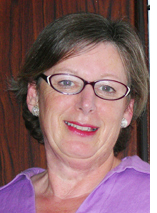|
By Judy Lash Balint
 BNEI DEKALIM, Israel—I remember when I first heard about the dream community that would rise out of the dust and ashes of Neve Dekalim, the largest of the 22 Jewish communities destroyed by the Gaza "disengagement" of 2005. BNEI DEKALIM, Israel—I remember when I first heard about the dream community that would rise out of the dust and ashes of Neve Dekalim, the largest of the 22 Jewish communities destroyed by the Gaza "disengagement" of 2005.
It was in the cramped room occupied by Rachel and Moshe Saperstein on the 6th floor of the Jerusalem Gold Hotel. Along with hundreds of their former neighbors, the Sapersteins spent 10 months attempting to take the first steps in recreating a semblance of a normal life after they were forcibly removed from their home and the meaningful lives they had built in the Gush.
Rachel would sit on her bed in the hotel and tell anyone who would listen about the new community that would be in a place where their presence would make a difference; where ecological concerns would be paramount and all kinds of educational institutions would be developed to help preserve the values and lifestyle that marked Neve Dekalim. There would even be a hotel and spa, she assured me. By the time they finally left the Jerusalem hotel in June 2006 to go to their "temporary" pre-fab homes in Nitzan near Ashkelon, Rachel and her friends had already pinpointed the Lachish area as the place where they would put down their new roots.
On Mondy, October 5, the first step of that dream became a reality as hundreds of people joined the former Gush Katif pioneers in the laying of the cornerstone for the new community of Bnei Dekalim in the beautiful eastern Lachish area.
As the electrifying blasts of an over-sized shofar were sounded by Arik Davidov standing at op a Caterpillar earth-mover, the crowd hushed to take in the views over the rolling landscape that extend to the Hebron hills in one direction and down to Gush Katif and the Mediterranean the other way.
In the presence of a couple of Knesset members(Nissim Slomiansky and Tzipi Hotovely)a slew of rabbis and various members of the local regional councils, Minister Ariel Attias, Minister of Building and Construction told the crowd that the Gaza disengagement was a "mistake" and noted that his ministry had invested 170 million NIS in Bnei Dekalim.
Representatives of the neighboring local councils enthusiastically welcomed the development of the new yishuv and its potential to boost the local population of this sparsely populated area within the Green Line.
Go to the top of next column
|
|

But it was left to Rachel Saperstein to relate in English a brief history of Lachish. Rachel explains that Lachish is generally regarded as the second most important city in the southern kingdom of Judah. It enters the biblical narrative in the battle accounts of Joshua, Sennacherib and Nebuchadnezzar.In fact, on the winding, scenic two-lane road that leads from the main Beersheva-Kiryat Gat highway to Bnei Dekalim, we pass the archeological site of Tel Lachish that is now surrounded by acres and acres of lush grapevines that belong to the small communities long the road.
Lachish was known as the defense center and fortress that monitored entrance into the Judean Hill Country from the west and southwest. Dating from between 598-589/88 B.C., the Lachish Letters, describing the Babylonian conquest of Judah, illustrate the kind of Hebrew used at the time of Jeremiah.
According to Walking in Their Sandals, "when Nebuchadnezzar established the Babylonian domination of Judah in 588-587 B.C., the southern outpost city of Lachish was one of the last remaining Judean cities to be taken (Jer 34:6,7). The Jews had arranged for relay communication between Lachish and Jerusalem by means of smoke signals at Azekah, fifteen miles from Jerusalem, and Lachish, thirty-five miles distant. Letter 4 of the Lachish Letters reads: "We were watching for the smoke signals of Lachish…because we do not see Azekah." This indicated that Azekah had already fallen to Nebuchadnezzar. Soon after this, Lachish would capitulate."
Rachel Saperstein closed her remarks by noting:
"The Kings of Israel built glorious cities here and Bar Kochba the revolutionary found refuge here.. We, the expelled people of Gush Katif will build in this grand tradition. What an honor. Come and join us!"
There are already 60 families who will pioneer the new community. Eventually, 500 families will make Bnei Dekalim their home and become the center of the revitalized Lachish region, fulfilling the mitzvah of settling the land.
For Rachel Saperstein and her neighbors it's no longer a dream but the dawning of a new reality.
|
|

